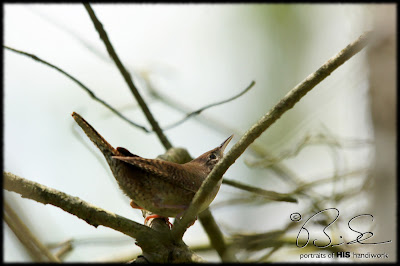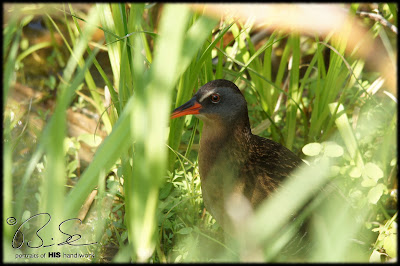The Osprey nest is atop a cell tower northeast of the Highway 6 and 403 interchange south of Waterdown (here). You can easily access it by the parking lot of the City View Motel off of Plains Road.
 |
| Osprey nest atop the cell tower. |
Although not a scenic setting, they are still amazing, huge raptors and I should probably try a few more stops this summer with an early departure time for work allowing a morning to try and capture a shot of one of them returning with a fish. Osprey are known for how they carry their catch in a head forward position for aerodynamics.
 |
| Osprey |
 |
| Osprey leaves for breakfast. |
But while waiting, I was treated with the sweet song of a very vocal Yellow Warbler. Not hard to find these bright birds in the morning sun! And I took full advantage of the morning sunlight which I seldom get. As I've mentioned before, most of my outings are at lunch time which often means harsh lighting conditions. This lighting didn't dissapoint!
 |
| Yellow Warbler singing. |
 |
| Yellow Warbler portrait. |
I've stopped here before last year trying to see the Osprey, and also saw the Yellow Warbler in exactly the same location. There is a small strip of trees and scrub against the slope to Highway 6 and it must like this location as it seems to return here.
 |
| Yellow Warbler singing away. |
 |
| Yellow Warbler... still singing. |
On the way home that same day, I stopped by the SWM pond behind the Walmart and Rona (here). I'd heard of other birders from Hamilton stopping in here and thought since I drive within 2 minutes of this location every way to and from work, I'd try it out. There wasn't too much visible in my quick time there.
A bright flash of blue caught my eye as I descended down the gravel path. A Silvery Blue Butterfly. The blue interior was only visible when it flew, staying inconspicuous when resting with its wings closed.
 |
| Silvery Blue Butterfly |
Of course, for a location like this there would be something wrong if there weren't a number of Red-Winged Blackbirds. I saw this one quite nimbly fly out and catch a dragonfly.
As I walked around the trails in the pond basin, I suddenly heard a loud, squeaky call from the bull rushes. As I approached, a Green Heron flushed out and flew over to another section of the pond. I approached slowly and wondered why it wasn't retreating further into the protection of the greenery. It had landed on an abandoned Swan nest which had one egg sitting lonely and unattended.
 |
| Green Heron |
 |
| Green Heron stalking |
It was soon evident why the Green Heron had not been paying attention to me - it was preoccupied with a frog it suddenly lunged for and caught it. You can just see the legs in the shot below before it went down the hatch. After that, the heron suddenly noticed me again, and winged off into forest cover beyond to let the wriggling frog settle into its stomach away from me.
 |
| Green Heron downing a frog. |
I should probably try that location again soon and see what else there is to see with a little more time to spend.
Keep enjoying His handiwork!




















































